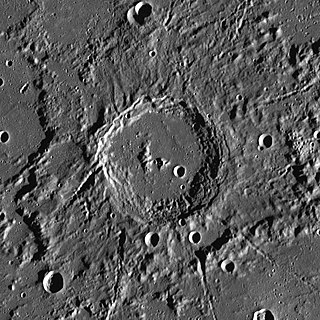
Ustad Isa Shirazi was a Persian architect from the city of Shiraz in Safavid Persia often described as the assistant architect of the Taj Mahal in Agra, India.

Ustad Mansur was a seventeenth-century Indian painter, who served as a Mughal court artist. During which period he excelled at depicting plants and animals. He was the earliest artist to depict the dodo in colour, apart from being the first to illustrate the Siberian crane. Towards the end of Akbar's reign, he gained the title of ustad (master) and during the reign of Mughal Emperor Jahangir his masterpieces earned him the title of Nãdir-al-’Asr. Although he was largely known for his natural history illustrations, he also portrayed people in various manuscript illustrations.

Ustad Bismillah Khan, often referred to by the title Ustad, was an Indian musician credited with popularizing the shehnai, a reeded woodwind instrument. He played it with such expressive virtuosity that he became a leading Hindustani classical music artist. His name was indelibly linked with the woodwind instrument. While the shehnai had long held importance as a folk instrument played primarily schooled in traditional ceremonies, Khan is credited with elevating its status and bringing it to the concert stage.

An Iranian architect is traditionally called a mi'mar.

Ustad Shahid Parvez Khan is an Indian classical sitar maestro from the Imdadkhani gharana. He represents the seventh generation of the Etawah Gharana as its primary exponent. He is praised especially for the vocalistic phrasing and quality of his raga improvisations, known as "Gayaki Ang." This translates to "Singing branch/limb". The sitar legend, Ustad Vilayat Khan resurrected and re-introduced Gayaki Ang as a widely accepted sitar genre in India and abroad, and his nephew, Ustad Shahid Parvez Khan has carried this torch into the present day.

Rashid Khan was an Indian classical musician in the Hindustani tradition. He belonged to the Rampur-Sahaswan gharana, and was the great-grandson of gharana founder Inayat Hussain Khan. He was married to Soma Khan.

Ustad Ahmad Lahori (c.1580–1649) also known as Ahmad Ma'mar Lahori was the chief Mughal architect during the reign of emperor Shah Jahan. He was responsible for the construction of several Mughal monuments, including the Taj Mahal in Agra and the Red fort in Delhi; both of which are World Heritage sites. He also designed the Jama Mosque in Delhi.

The Gulf Country or North West Queensland is the region of woodland and savanna grassland surrounding the Gulf of Carpentaria in north western Queensland and eastern Northern Territory on the north coast of Australia. The region is also called the Gulf Savannah. The Gulf Country is crossed by the Savannah Way highway.
Ustad or ostāz or Ustadam is an honorific title used in West Asia, North Africa, Central Asia, South Asia and Southeast Asia. It is used in various languages such as Persian, Arabic: أُسْتَاذٌ, romanized: Ustādh, Azerbaijani, Urdu, Hindi, Bengali, Marathi, Dhivehi, Punjabi, Pashto, Turkish, Kazakh, Uzbek, Indonesian, Malay and Kurdish.

Ghulam Mohammad Saznawaz was the last known master of Kashmiri Sufiyana Music in the world. He opened a school to teach his genre of music, although it did not attract many students from Kashmir because of religious and social prejudice. He was awarded India's fourth highest civilian honour the Padma Shri in 2013. He was also awarded the Sangeet Natak Akademi Award in 1998 for his contribution to Sufiana Kalam of Kashmir. He died in 2014 in Srinagar at the age of 74.

Abdul Sattar Khan, popularly known as Ustad Tari Khan, is a Pakistani tabla player and vocalist. Tari Khan hails from the Punjab gharana and is the student of Ustad Miyan Shaukat Hussain. He has been awarded with many accolades such as Taj Poshi, the Hazrat Amir Khusrow Award, as well as Pakistan's Pride of Performance Award in 2008. Tari Khan belongs to the tabla playing gharana called the Punjab gharana. Today, he is acknowledged as one of the foremost Tabla players of all time by musicians all over the world.
Altaf Hussain Tafu Khan, better known as Ustad Tafu or simply Tafoo, is a Pakistani musician from Lahore, Pakistan known as a 'master tabla player'. Ustad Tafu is especially adept at playing the musical instrument Tabla. Ustad Tafu has also been associated with Coke Studio in Pakistan.

Ustad & the Divas is a compilation album composed by Sandesh Shandilya, which brings three singers, K. S. Chitra, Sunidhi Chauhan, and Shreya Ghoshal, together with Ustad Sultan Khan.

Mansur is a crater on Mercury. Its name was adopted by the International Astronomical Union in 1979. Mansur is named for the Indian artist Ustad Mansur, who lived in the 17th century CE.
Ustad Rahimuddin Khan Dagar (1900–1975) was a dhrupad singer from India who was awarded Padma Bhushan in 1969. He was the father of Rahim Fahimuddin Dagar and uncle of H. Sayeeduddin Dagar, who were trained under him.
Ustad Gul Mohammad Khan (1876–1979) was a Bangladeshi musician. He was awarded Ekushey Padak in 1977 by the Government of Bangladesh.
Hafeez Ahmed Khan was an Indian classical musician of Hindustani classical music. He is known as one of the leading exponents of the Rampur-Sahaswan gharana, a musical school popular in the northern parts of the Indian state of Uttar Pradesh. He learnt music in gurukul system and pursued his academic studies the conventional way, secured a master's degree in politics and taught at the University of Minnesota. He was a deputy director of the All India Radio and the vice chancellor of the Indira Kala Sangeet University, the only Indian university dedicated to music. He mentored many disciples such as Rajendra Prasanna, Roma Rani Bhattacharya, Sakuntala Narasimhan and Subhendu Ghosh and acted in a German movie on the life of Tansen, by name, The Rain Maker. He was a recipient of the 1996 Sangeet Natak Akademi Award. The Government of India awarded her the fourth highest civilian honour of the Padma Shri in 1991. Hafeez Ahmed Khan, who was married to the daughter of renowned singer, Nissar Hussain Khan, died in 2006.
Abdul Azeez Madani was an Indian Islamic scholar and writer from Kerala and one of the leaders of traditional Sunni Muslims in India. He died in Badriyya Manzil and was buried in Madani Ustad Maqam at Kunnamangalam.

Kulthum is a crater on Mercury. It has a diameter of 31 kilometers. Its name was suggested by Molouk Ba-Isa from Saudi Arabia, Swiss individual Riana Rakotoarimanana, and American residents Yehya Hassouna, David Suttles, Thorayya Said Giovannelli and Matt Giovannelli in a naming contest which was eventually adopted by the International Astronomical Union (IAU) on 2015. Kulthum is named for the Egyptian singer Umm Kulthum.














